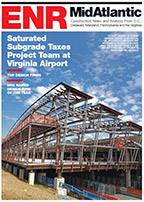Taking some time out from their hectic schedules, Roth and Sheppard participated in an e-mail Q&A, sharing their thoughts on design influences, industry changes and their futures.
MSC: What influences your work, outside of architecture or other architects?
HR: Separating myself from the everyday workplace and relationships allows me to observe behavior in how others solve the ordinary obstacles encountered in their lives. How they walk isn’t as important as the path they take. What they eat isn’t as important as how they dine. Understanding the simple patterns of life influences the way I try to resolve the spatial problems of each project.
JS: Influences come from art, science, fashion and technology. But what influences my work more than anything else is a studied response to context and indigenous architecture. Thus, if I design a building in an agricultural community in Northern Colorado, for example, the precedents I look at are traditional farm buildings, sheds, outbuildings and even those large, moving sprinkler trusses that irrigate fields.
Indigenous buildings and structures have an honesty and integrity that definitely influence my work and give it meaning. This informative process allows me to draw from existing typologies without duplicating. Thus, the work is representationally abstract versus literally duplicative. Yet, since it is rooted in something inherently memorable and of its place, it has an embedded language that remains familiar.
What do you enjoy most about the work that you do?
HR: The satisfaction of knowing that my thorough understanding of where my clients have been and where they are going has led to creating environments that solve previous problems and provide springboards to the future.
JS: I most enjoy the evolution of the interactive process with our clients. Many clients come to us with an idea of what they want, so our role is to extend on their vision, question norms and get to the real heart of the issues and problems. By doing this our design results from an inclusive process that is very participatory. We take the client to new areas of exploration and extend on their expectations.
Our best work respects simplicity yet is layered with serious meaning derived from the site, context, climate, region, art, science, etc. The balance and prioritization of these influences is what gives our work its lasting meaning, purpose and elegance.
What does winning AIA Firm of the Year mean to you? Considering the accolades your firm has already received, how does this feel different or spectacular?
HR: Winning architectural awards reinforces us in that our work is recognized. Winning the Firm of the Year goes beyond that by saying it is not only our work, but also our firm, as a community of professionals, that is recognized by the way we practice architecture and the way we conduct ourselves.
JS: When you work as hard as we have to push each building and client to new boundaries of expectation, it’s wonderful to receive recognition that our work is influential, that we are establishing higher levels of expectation and that our office has stayed consistent to these goals. From the beginning, we knew we wanted to do great work no matter what the scale or scope of the project, and we have stayed on course with our commitment to great design.
I’m hopeful that all of those who have worked with us and gone out on their own or to other firms have taken this commitment to design with them. Our present staff has it, and I hope they will continue forward with the same commitment we have maintained throughout our last 27 years.



Post a comment to this article
Report Abusive Comment